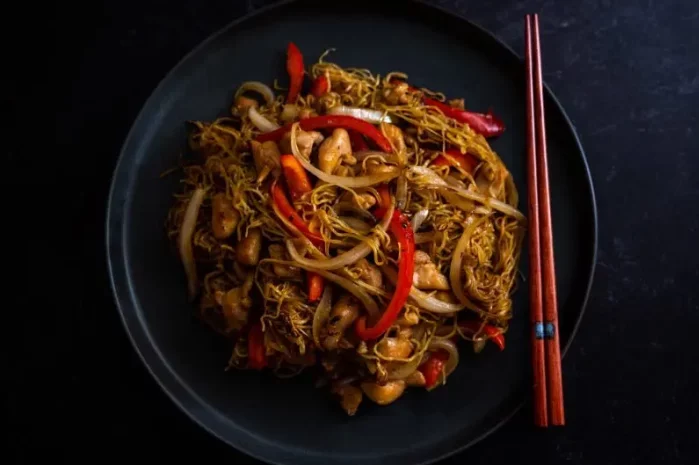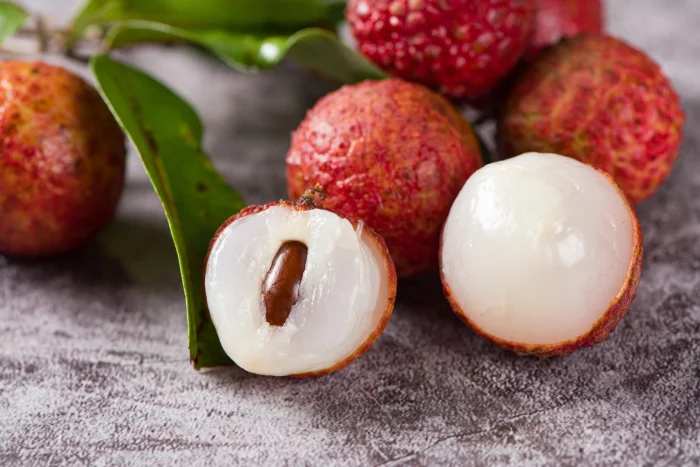Lo mein is a popular Chinese dish known for its stir-fried noodles and flavorful sauce. The sauce is the key to its savory, sweet, and slightly tangy taste. If you’ve ever enjoyed this dish at a Chinese restaurant, you know how delicious the sauce can be. Now, you can recreate this tasty dish at home by learning how to make Chinese lo mein sauce from scratch.
This article will walk you through the ingredients, steps, and tips for making the perfect lo mein sauce. Whether you’re cooking for yourself, your family, or a gathering, this guide will ensure your lo mein turns out flavorful and authentic.
What Is Lo Mein Sauce?
Before diving into the recipe, it’s important to understand what lo mein sauce is. Lo mein sauce is a savory mixture used to coat the noodles in a lo mein dish. The sauce usually consists of a blend of soy sauce, oyster sauce, hoisin sauce, and sesame oil. It may also include garlic, ginger, sugar, and other seasonings to create the perfect balance of sweet, salty, and umami flavors.
Key Ingredients for Lo Mein Sauce
1. Soy Sauce
Soy sauce is a staple in Chinese cooking and provides the base for lo mein sauce. It is salty, rich in umami, and enhances the overall flavor of the dish. You can use either light or dark soy sauce depending on your preference, but for a more balanced flavor, light soy sauce is commonly used in lo mein recipes.
2. Oyster Sauce
Oyster sauce is another essential ingredient in lo mein sauce. Made from oyster extracts, this sauce adds a deep, savory flavor to the dish. It has a slightly sweet taste, which pairs perfectly with the saltiness of soy sauce.
3. Hoisin Sauce
Hoisin sauce is a sweet and savory Chinese sauce that is thicker than soy sauce. It adds richness and a slightly sweet taste to the lo mein sauce. Hoisin sauce also contains spices and fermented soybeans, making it a versatile addition to many Chinese dishes.
4. Sesame Oil
Sesame oil is a flavorful oil made from toasted sesame seeds. It has a strong, nutty flavor that can elevate the taste of your lo mein sauce. A little goes a long way, so be sure to use it sparingly to avoid overpowering the dish.
5. Garlic
Garlic is a key flavor enhancer in Chinese cooking. It adds a sharp, aromatic flavor that complements the savory ingredients in the sauce. Freshly minced garlic is ideal, but you can also use garlic powder if you don’t have fresh garlic on hand.
6. Ginger
Ginger adds a warm, slightly spicy kick to the sauce. It also has a fresh, zesty flavor that works well in many Asian dishes. Fresh ginger is best for this recipe, as it imparts a brighter, more aromatic taste compared to ground ginger.
7. Sugar
Sugar is used to balance the savory and salty flavors in the sauce. It adds a touch of sweetness, which helps to round out the overall taste. You can use white sugar, brown sugar, or even honey for a different flavor profile.
8. Cornstarch
Cornstarch is used to thicken the sauce and give it a glossy finish. It helps the sauce adhere to the noodles and ensures that it has the right consistency for stir-frying. You’ll need a small amount of cornstarch mixed with water to create a slurry.
9. Water or Broth
Water or chicken broth can be added to thin out the sauce. Chicken broth adds extra depth of flavor, while water keeps the sauce lighter. You can use either depending on your preference.
How to Make Lo Mein Sauce
Now that you know what goes into the sauce, let’s walk through the process of making it.
Step 1: Gather Your Ingredients
First, gather all the necessary ingredients. Having everything ready to go will make the cooking process smoother. Here’s a quick checklist of what you’ll need:
- 3 tablespoons soy sauce
- 2 tablespoons oyster sauce
- 1 tablespoon hoisin sauce
- 1 tablespoon sesame oil
- 2 cloves garlic (minced)
- 1 teaspoon fresh ginger (grated)
- 1 tablespoon sugar
- 1 tablespoon cornstarch
- ½ cup water or chicken broth
Step 2: Mix the Sauce
In a small bowl, combine the soy sauce, oyster sauce, hoisin sauce, sesame oil, and sugar. Stir the mixture until the sugar is completely dissolved. This combination creates the base of your lo mein sauce.
Add the minced garlic and grated ginger to the sauce and stir well. These aromatic ingredients will infuse the sauce with a delightful fragrance and flavor.
Step 3: Make a Cornstarch Slurry
In a separate small bowl, mix the cornstarch with a few tablespoons of water or chicken broth. Stir until the cornstarch is completely dissolved. This slurry will help thicken the sauce and give it the glossy texture that’s typical in lo mein dishes.
Step 4: Cook the Sauce
Heat a pan or wok over medium heat. Once the pan is hot, pour in the sauce mixture and bring it to a simmer. Stir occasionally to prevent the sauce from burning or sticking to the bottom of the pan.
Once the sauce begins to simmer, add the cornstarch slurry to the pan. Stir continuously until the sauce thickens and becomes smooth. If the sauce becomes too thick, you can add a little more water or broth to adjust the consistency.
Step 5: Taste and Adjust
Taste the sauce to make sure the flavors are balanced. If you prefer a sweeter sauce, add a bit more sugar or hoisin sauce. If you like a saltier flavor, add a little more soy sauce. If you want more depth, add a touch more oyster sauce. Adjust the seasonings to your liking until you’re happy with the flavor.
Step 6: Use the Sauce
Once the sauce is ready, it’s time to combine it with your cooked noodles. You can use this sauce for any lo mein recipe by tossing it with stir-fried noodles, vegetables, and protein like chicken, beef, shrimp, or tofu. The sauce will coat the noodles, giving them a rich and flavorful taste.
Tips for Making the Perfect Lo Mein Sauce
1. Experiment with Sweeteners
While sugar is the most common sweetener used in lo mein sauce, you can experiment with different options to add a unique twist. Brown sugar or honey can give the sauce a deeper, more complex sweetness. If you prefer a sugar-free version, you can use stevia or monk fruit sweetener.
2. Use Fresh Garlic and Ginger
For the best flavor, always use fresh garlic and ginger. These ingredients have a bright, aromatic quality that really enhances the overall taste of the sauce. Fresh ginger also has a slight heat that can add complexity to the dish.
3. Customize the Sauce to Your Taste
Don’t be afraid to adjust the sauce ingredients based on your preferences. If you like a spicier sauce, you can add chili paste or red pepper flakes. If you prefer a more umami-rich flavor, try adding a splash of fish sauce or a little more oyster sauce.
4. Make It Ahead of Time
You can make the lo mein sauce ahead of time and store it in an airtight container in the refrigerator for up to a week. This can save you time when preparing your lo mein, and it allows the flavors to meld together for a more intense taste.
5. Use the Sauce for Other Dishes
While this sauce is perfect for lo mein, it can also be used for other stir-fried dishes like chow mein, fried rice, or even as a dipping sauce for dumplings or spring rolls. The versatility of this sauce makes it a great addition to your kitchen repertoire.
Conclusion
Making your own Chinese lo mein sauce is easy, and it results in a flavorful, homemade dish that rivals any takeout. With just a few simple ingredients, you can create a sauce that brings out the best in stir-fried noodles, vegetables, and protein. By following this guide and adjusting the sauce to suit your taste, you’ll be able to enjoy the delicious flavors of lo mein whenever you like.
This recipe offers a starting point, but feel free to get creative with your ingredients. Whether you’re cooking for a special occasion or a weeknight meal, a homemade lo mein sauce will make your dish unforgettable.
Related topics

























